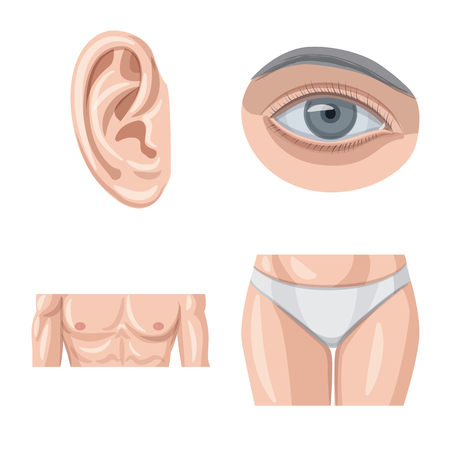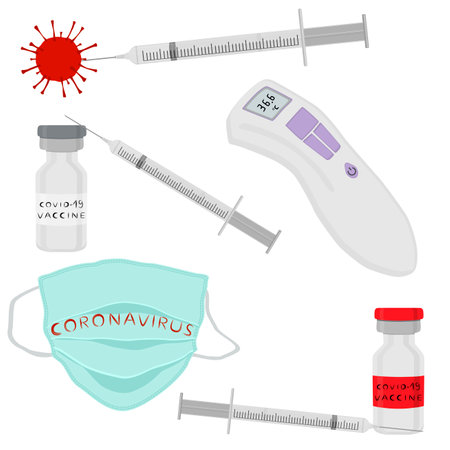1. Understanding Cellulite: Causes and Challenges
Cellulite is a common skin condition that affects people of all shapes and sizes. It appears as dimpled or lumpy skin, typically on the thighs, buttocks, and abdomen. While cellulite is completely harmless, many individuals seek ways to reduce its appearance for smoother-looking skin.
What Is Cellulite?
Cellulite occurs when fat deposits push through the connective tissue beneath the skin. This creates a bumpy or uneven texture, often compared to cottage cheese or orange peel. Although cellulite can affect anyone, it is more common in women due to differences in fat distribution, muscle structure, and connective tissue.
Why Does Cellulite Form?
The formation of cellulite is influenced by several factors, including genetics, lifestyle choices, and hormonal changes. Some of the main reasons why cellulite develops include:
- Fat Distribution: The way fat cells are arranged under the skin affects the visibility of cellulite.
- Connective Tissue Structure: Weak or inflexible connective tissue allows fat to push through, creating dimples.
- Poor Circulation: Reduced blood flow can lead to fluid retention and weakened connective tissues.
- Hormones: Estrogen plays a role in fat storage and collagen production, making women more prone to cellulite.
- Aging: As we age, skin loses elasticity and becomes thinner, making cellulite more noticeable.
Common Factors That Contribute to Cellulite
The development of cellulite is influenced by a combination of genetic and lifestyle factors. Below is a table summarizing key contributors:
| Factor | Description |
|---|---|
| Genetics | If your family members have cellulite, you may be more likely to develop it. |
| Diet | A diet high in processed foods, sugar, and salt can contribute to fat accumulation and water retention. |
| Lack of Exercise | A sedentary lifestyle can weaken muscles and increase fat storage. |
| Hydration Levels | Poor hydration can make skin less elastic and more prone to dimpling. |
| Lifestyle Choices | Sitting for long periods, smoking, and excessive alcohol consumption can impact circulation and collagen production. |
The Challenge of Reducing Cellulite
Treating cellulite is not always easy because it involves multiple factors like skin structure, fat distribution, and overall health. While weight loss and exercise can improve muscle tone and reduce fat deposits, they may not completely eliminate cellulite. This is why many individuals turn to topical creams as an alternative solution—hoping for visible improvements without invasive treatments.
2. How Topical Creams Claim to Reduce Cellulite
Many cellulite creams on the market promise smoother, firmer skin by targeting fat cells and improving circulation. These products often contain active ingredients that claim to break down fat deposits, boost collagen production, or enhance skin elasticity. But how exactly do they work? Lets take a closer look at some of the most common ingredients found in cellulite creams and their supposed effects.
Common Active Ingredients in Cellulite Creams
| Ingredient | How It Works |
|---|---|
| Caffeine | Caffeine is believed to temporarily tighten the skin by dehydrating fat cells, making cellulite appear less noticeable. It also stimulates blood flow, which may help reduce fluid retention. |
| Retinol | A form of Vitamin A, retinol helps boost collagen production and improve skin thickness. Over time, this may make cellulite less visible by strengthening the skin’s structure. |
| L-Carnitine | This amino acid derivative is thought to help with fat metabolism, potentially reducing the appearance of cellulite when applied topically. |
| Aminophylline | A compound that may help break down fat cells and tighten the skin. However, its effectiveness in topical creams is still debated. |
| Green Tea Extract | Packed with antioxidants, green tea extract may help improve circulation and reduce inflammation, contributing to a smoother appearance. |
| Coconut Oil & Shea Butter | These moisturizing agents don’t directly target cellulite but help keep the skin hydrated and plump, making dimples less pronounced. |
The Science Behind These Ingredients
The effectiveness of these ingredients varies from person to person. While caffeine and retinol have some scientific backing for improving skin texture, other ingredients like aminophylline lack substantial evidence for significant cellulite reduction. Many of these compounds work by temporarily tightening the skin or improving hydration rather than eliminating cellulite completely.
The Role of Massage in Enhancing Results
An important factor in how well these creams work is how they are applied. Massaging the cream into the skin can improve circulation and lymphatic drainage, which may enhance results. Some experts suggest using a firm circular motion during application to maximize absorption and stimulate blood flow.
A Temporary Fix or a Long-Term Solution?
The reality is that most topical creams provide only temporary improvements. They may reduce the visibility of cellulite for a short period, especially when used consistently. However, they do not eliminate fat cells or permanently change skin structure. For long-term results, combining these creams with a healthy diet, exercise, and proper hydration is recommended.

3. Scientific Evidence: Do These Creams Actually Work?
Many cellulite-reducing creams on the market claim to smooth out dimpled skin and reduce the appearance of cellulite. But do they really live up to the hype? To find out, lets take a look at scientific studies and expert opinions on their effectiveness.
What Does the Research Say?
Studies on cellulite creams have produced mixed results. Some research suggests that certain ingredients may provide temporary improvements in skin texture and firmness, while others show little to no long-term benefits. Below is a breakdown of key ingredients commonly found in these creams and their reported effects:
| Ingredient | Reported Effects | Scientific Support |
|---|---|---|
| Caffeine | May temporarily tighten skin and improve circulation | Some studies support short-term improvement |
| Retinol | Aids in collagen production, which may help with skin elasticity | Mild evidence suggests long-term improvement with consistent use |
| Aminophylline | Believed to break down fat cells under the skin | Lack of strong scientific backing for significant cellulite reduction |
| L-Carnitine | Said to help metabolize fat in skin tissues | No conclusive evidence of cellulite reduction |
| Peptides | Might boost collagen production and improve skin texture | Plausible benefits but requires more research |
The Expert Opinion
Dermatologists and skincare experts generally agree that while some topical treatments may offer slight improvements, they are not a permanent solution for cellulite. Many experts emphasize that factors like genetics, lifestyle, and overall body composition play a much bigger role in cellulite formation than any single skincare product can address.
The Temporary Nature of Results
A key takeaway from research is that most cellulite creams provide only temporary results. Ingredients like caffeine can dehydrate fat cells, making the skin appear firmer for a short period. However, once you stop using the cream, the effects usually fade.
The Importance of Consistency
If youre considering trying a cellulite cream, consistency is essential. Studies suggest that prolonged use (often several months) is necessary to see even minor improvements. Combining these creams with other healthy habits such as regular exercise and a balanced diet may enhance their effectiveness.
4. Alternative Methods for Cellulite Reduction
While topical creams are a popular option for reducing the appearance of cellulite, they are not the only solution. There are several alternative methods that may provide more effective and long-lasting results. Lets explore some of these options and compare them to topical creams.
Lifestyle Changes
One of the most natural ways to reduce cellulite is through lifestyle adjustments. Factors like diet, hydration, and physical activity play a significant role in skin health and fat distribution.
Key Lifestyle Adjustments
- Healthy Diet: Eating a balanced diet rich in fruits, vegetables, lean proteins, and healthy fats can help reduce body fat and improve skin elasticity.
- Regular Exercise: Strength training and cardio workouts can tone muscles and reduce fat deposits under the skin, making cellulite less noticeable.
- Hydration: Drinking plenty of water keeps the skin hydrated and may improve its overall texture.
Massage Therapy
Massage treatments, such as lymphatic drainage or deep tissue massage, can temporarily reduce cellulite by improving circulation and breaking down fat deposits.
Pros & Cons of Massage Therapy
| Pros | Cons |
|---|---|
| Increases blood flow and lymphatic drainage | Results are temporary and require regular sessions |
| May improve skin texture | Treatment costs can add up over time |
| No invasive procedures required | Might not work for severe cellulite cases |
Medical Procedures
If topical creams and lifestyle changes dont provide the desired results, medical treatments offer more advanced solutions.
Popular Medical Treatments for Cellulite
- Laser Therapy: Uses laser energy to break down fat cells and boost collagen production.
- Cryolipolysis (CoolSculpting): Freezes fat cells to reduce cellulite appearance.
- Radiofrequency Treatments: Tighten skin and stimulate collagen production to smooth out dimples.
- Surgical Options: Procedures like subcision can cut fibrous bands responsible for cellulite dimpling.
Comparison: Topical Creams vs. Other Methods
The effectiveness of cellulite treatments varies depending on individual factors. Below is a comparison of topical creams versus other common alternatives:
| Treatment Method | Effectiveness | Cost | Time Required for Results |
|---|---|---|---|
| Topical Creams | Mild improvement with consistent use | $20 – $100 per bottle | A few weeks to months |
| Lifestyle Changes | Sustainable improvements over time | No additional cost (except gym/diet expenses) | A few months to see noticeable effects |
| Massage Therapy | TEMPORARY improvement in circulation & texture | $50 – $200 per session | A few sessions needed for visible changes |
| Medical Procedures | The most effective but invasive option | $500 – $5,000 depending on treatment type | A few weeks to months depending on procedure |
The best approach often depends on personal preferences, budget, and the severity of cellulite. Some people may find success combining multiple methods for optimal results.
5. Are Cellulite Creams Worth the Investment?
With so many cellulite creams on the market, its natural to wonder if they’re worth the money. To help you decide, lets break down the cost, effectiveness, and what real consumers have to say about these products.
Weighing the Cost
Cellulite creams range in price from budget-friendly drugstore options to high-end luxury brands. Heres a general breakdown:
| Price Range | Typical Ingredients | Average Consumer Rating |
|---|---|---|
| $10 – $30 | Caffeine, basic moisturizers | 3.5 – 4 stars |
| $30 – $60 | Caffeine, retinol, peptides | 4 – 4.5 stars |
| $60+ | Advanced formulas with botanical extracts, antioxidants | 4.5 – 5 stars |
Effectiveness: What Science Says
The effectiveness of cellulite creams depends largely on their active ingredients and consistent use. While some ingredients like caffeine can temporarily tighten skin, long-term results are harder to achieve without additional treatments like exercise and a healthy diet.
Key Factors Influencing Results:
- Active Ingredients: Caffeine and retinol are among the most studied for cellulite reduction.
- Consistency: Daily application is usually required for visible improvements.
- Lifestyle Habits: Diet, hydration, and exercise enhance results.
Consumer Reviews: Real Experiences
Many users report smoother skin and temporary firmness, but results vary based on individual skin types and expectations. Here’s what common reviews reveal:
- Positive Feedback: Users appreciate improved skin texture and hydration.
- Mixed Opinions: Some see minor changes but don’t experience dramatic cellulite reduction.
- Skepticism: A few claim no noticeable difference despite consistent use.
The Bottom Line: Are They Worth It?
If youre looking for a non-invasive way to improve skin appearance, cellulite creams might be a worthwhile addition to your routine—especially when combined with other healthy habits. However, managing expectations is key, as they’re unlikely to provide permanent or dramatic changes on their own.


